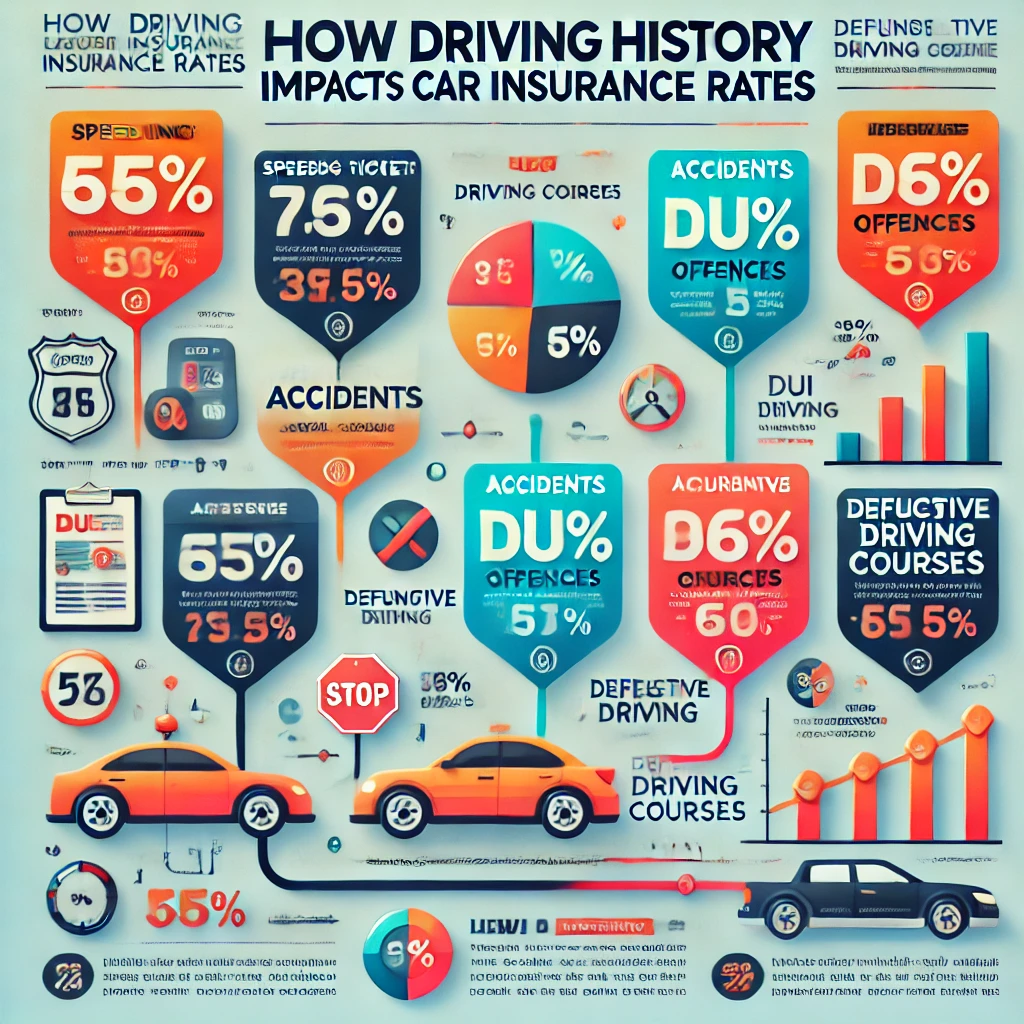Your driving history plays a significant role in determining your auto insurance rates. Insurance companies use your driving history to assess your risk level as a driver and, based on that, decide how much to charge you for coverage. Here’s how your driving history impacts your insurance premiums:
1. Traffic Violations
If you’ve received any traffic tickets, they can increase your insurance premiums. The more severe the violation (e.g., speeding, running a red light, or reckless driving), the higher your rate increase may be. A history of multiple violations over a few years can make you appear as a higher-risk driver, leading to higher premiums.
2. Accidents
If you’ve been involved in accidents, especially if you were at fault, this will significantly affect your premiums. Insurance companies will see you as a riskier driver, which could lead to rate hikes. However, if you were not at fault in the accident, the impact on your premiums may be less significant, though some states allow insurers to increase rates even for accidents that weren’t your fault.
3. Claims History
Making frequent claims can cause your insurance premiums to increase. Insurers consider drivers who file multiple claims as riskier to insure, which prompts them to charge higher rates. However, not all claims impact your premiums equally; for example, comprehensive claims (such as for theft or vandalism) may not affect your rates as much as collision claims.
4. DUI or DWI Convictions
A DUI (Driving Under the Influence) or DWI (Driving While Intoxicated) conviction will have a major impact on your insurance rates. This is considered one of the most serious offenses, and insurers will significantly raise your premiums, sometimes for several years. You may also have difficulty finding coverage with certain providers, as many companies are unwilling to insure drivers with a DUI on their record.
5. Insurance Lapses
If you have a history of lapsing coverage or letting your policy expire, insurers may see you as a higher risk. Insurance companies may raise your premiums or even refuse to insure you, depending on how long the lapse was and the reason behind it.
6. Defensive Driving Courses
Taking a defensive driving course or a similar safety course can help lower your insurance premiums. Some insurers offer discounts to drivers who complete these programs, as they demonstrate a commitment to improving driving habits and reducing accident risks.
7. Length of Driving History
A longer driving history with a clean record may lead to lower rates. Insurance companies often reward drivers with many years of experience and no major violations or accidents. Conversely, if you’re a new driver or have a relatively short history, insurers may consider you a higher risk, resulting in higher premiums.
8. Severity and Frequency of Violations
A single speeding ticket or minor incident might lead to a modest premium increase, but a pattern of frequent violations or severe offenses can significantly increase your rates. Serious offenses like reckless driving, hit-and-run, or multiple accidents within a short period will often lead to much higher premiums.
In Conclusion:
Your driving history is a key factor that insurers use to determine your level of risk and, subsequently, your insurance rates. Keeping a clean driving record, avoiding traffic violations and accidents, and taking steps to improve your driving habits can help lower your premiums. On the other hand, a poor driving history, especially with serious violations or accidents, can significantly raise your insurance costs.





